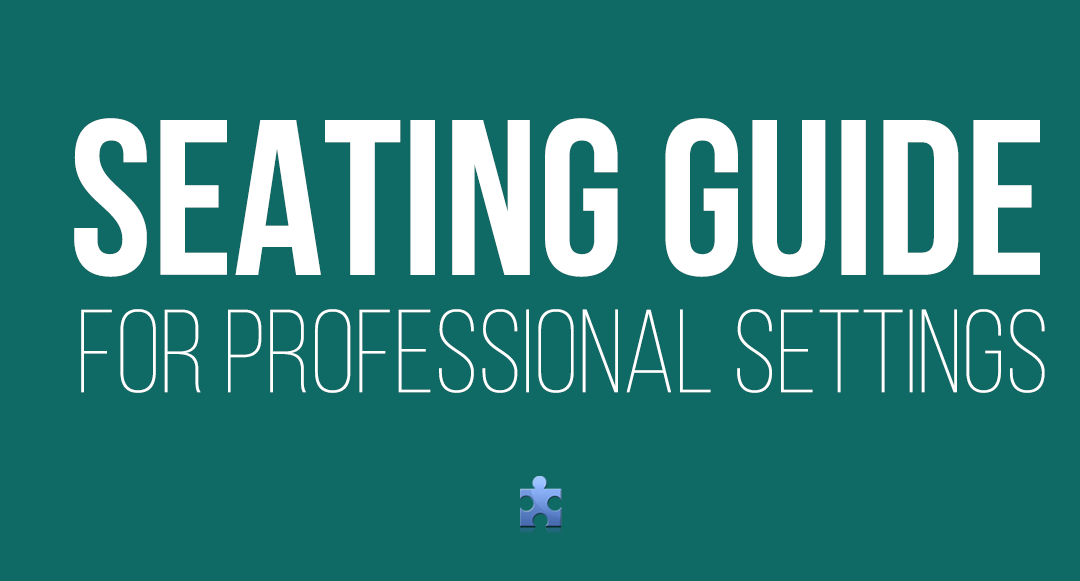Apparently, where you are seated has a lot to contribute to your professional success.
Have you ever wondered why the “bibo kids” [translation: enthusiastic or achiever kids] always sit in front of the class and almost always close to the middle of the front row?
Have you ever found difficulty deciding where to sit in a room full of people you don’t know? Where do you usually sit? Why do you think you sit where you usually do, especially when you have no company?
Why do you think you sit where you usually do, especially when you have no company?
Where you sit in a social setting is a function of power and power dynamics. Choosing where to sit is, in fact, a delicate art and play of power.
When you are in a large classroom with hundreds of other people, you could either choose a seat in middle or at back to remain anonymous or (almost) unnoticeable, perhaps.
Or, you could also choose a seat closer to the front to remain always visible to the teacher and avoid distractions from your classmates. When you are in the front row, you see only your teacher or whoever is in front talking.
When you are in a smaller seminar or gathering that met at a large round table, often times you often negotiate where to sit. Do you sit close to the speaker, professor, or the presenter?
In our diplomatic and consular practice class, one of the modules of diplomatic protocol is how to properly seat dignitaries.
By properly, we mean where to seat them according to rank (or power).
In professional settings, there are unspoken rules similar to that of diplomatic protocols. Why is this so?
For one, the seat you choose influences your engagement in every business meeting you get into. This, in turn, affects your overall career performance.
Where you sit is not a minor thing. It tells a lot about how you perceive your role, how you engage with other professionals, and how likely you are to succeed in any professional meeting or gathering (by “succeed” we mean “how likely you are to achieve what you want to achieve in that meeting”).
Putting it differently, where you choose to sit can end up making a big difference in the way hiring managers, your employer, and your co-workers think of you.
Where to Sit in Professional Settings
So, let’s take a look at two different professional settings—interviews and meetings—where seating matters.

One-on-One Interview
If you’ve ever been a job seeker, you’ve probably already received endless advice about how important first impressions are when you go in for an interview.
You’ve heard that you should dress well, show up on time, make eye contact, smile, and give a firm handshake.
But one thing that doesn’t always come up is where you should sit for your interview.
As a general rule, you should wait for your interviewer to invite you to sit, and then take the seat they gesture at.
However, if your interviewer doesn’t indicate a particular chair and you have several choices, where do you seat?
A good rule of the thumb is to seat directly across from him or her and adjust it if necessary so that you are at eye level.
This shows confidence and an interest in engaging with the interviewer, two qualities that are important for any job.
Group Interview
When you’re placed in the daunting situation of interviewing with a panel of people, you’ll want to sit directly across from your interviewers, at the middle of the table.
Make sure that you’re engaging with all your interviewers by shaking hands, making eye contact, and smiling. You should also introduce yourself to each interviewer individually.
If you’ve brought something like a purse or a briefcase with you, carefully place it underneath the table rather than on it.
Brainstorming Meeting
Although it might not seem like as much of a high-stakes situation as a job interview, the seating arrangement during a company brainstorming meeting is still important because it can influence the group’s productivity.
Whenever possible, keep brainstorming groups small and sit at a round table so that everyone can be involved—or eliminate the table altogether and circle up the chairs to encourage an informal discussion. If you know that there are several strong personalities in the room, separate them across the circle to encourage the most collaborative environment.
Lunch Meeting
That’s right, your seating arrangement is important even when you’re going out to lunch!
If you’re meeting with one other coworker or supervisor, request a 4-top table in a quiet corner of the restaurant to avoid loud noises and other distractions. Instead of sitting directly across from one another, you and your co-worker should sit next to each other on the corner of the table to allow for more intimate conversation.
If the two of you have also invited a client to lunch, politely direct him or her to the chair next to you when he or she arrives.
Professional seating arrangements certainly aren’t something that you should get stressed out about, but being aware of them can help you to put yourself in the best possible light and establish the most conducive work environment.
Final Thoughts
Where you sit is not a minor thing. It tells a lot about how you perceive your role, how you engage with other professionals, and how likely you are to succeed in any professional meeting or gathering (by “succeed” we mean “how likely you are to achieve what you want to achieve in that meeting”).
Putting it differently, where you choose to sit can end up making a big difference in the way hiring managers, your employer, and your co-workers think of you.

